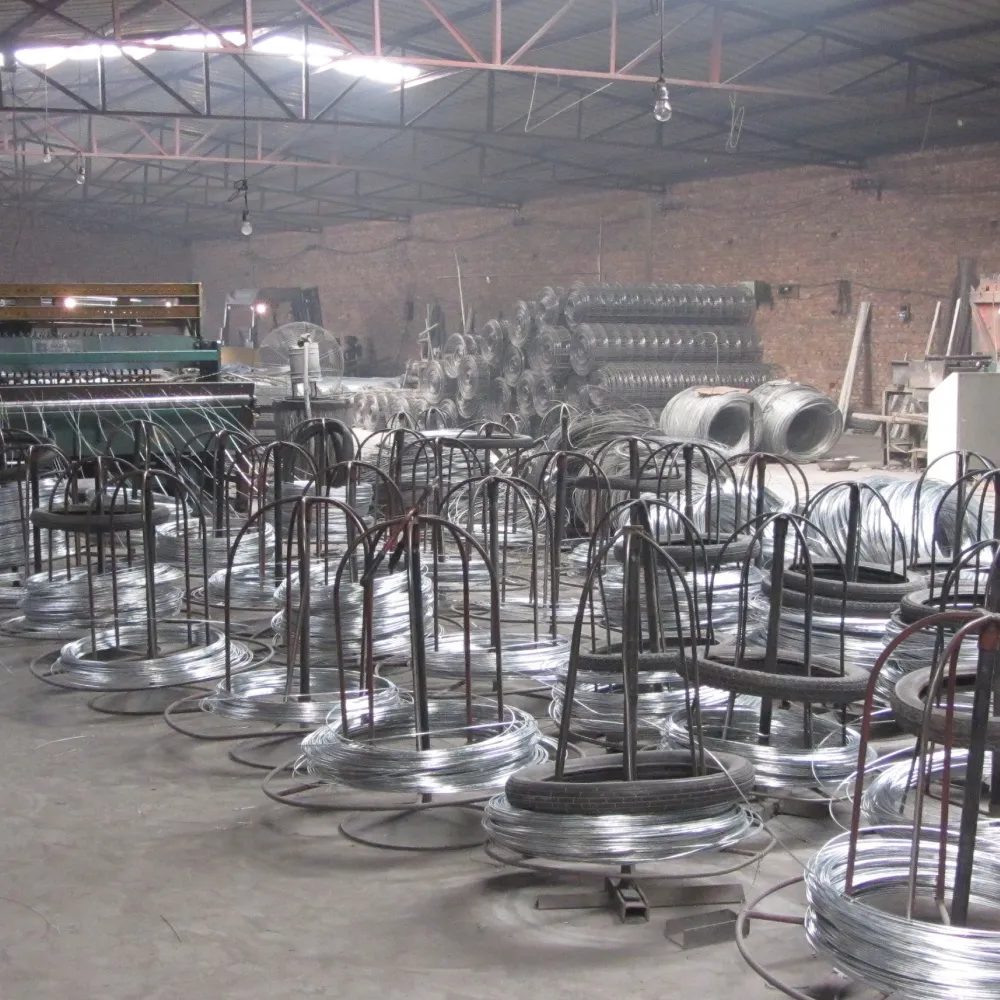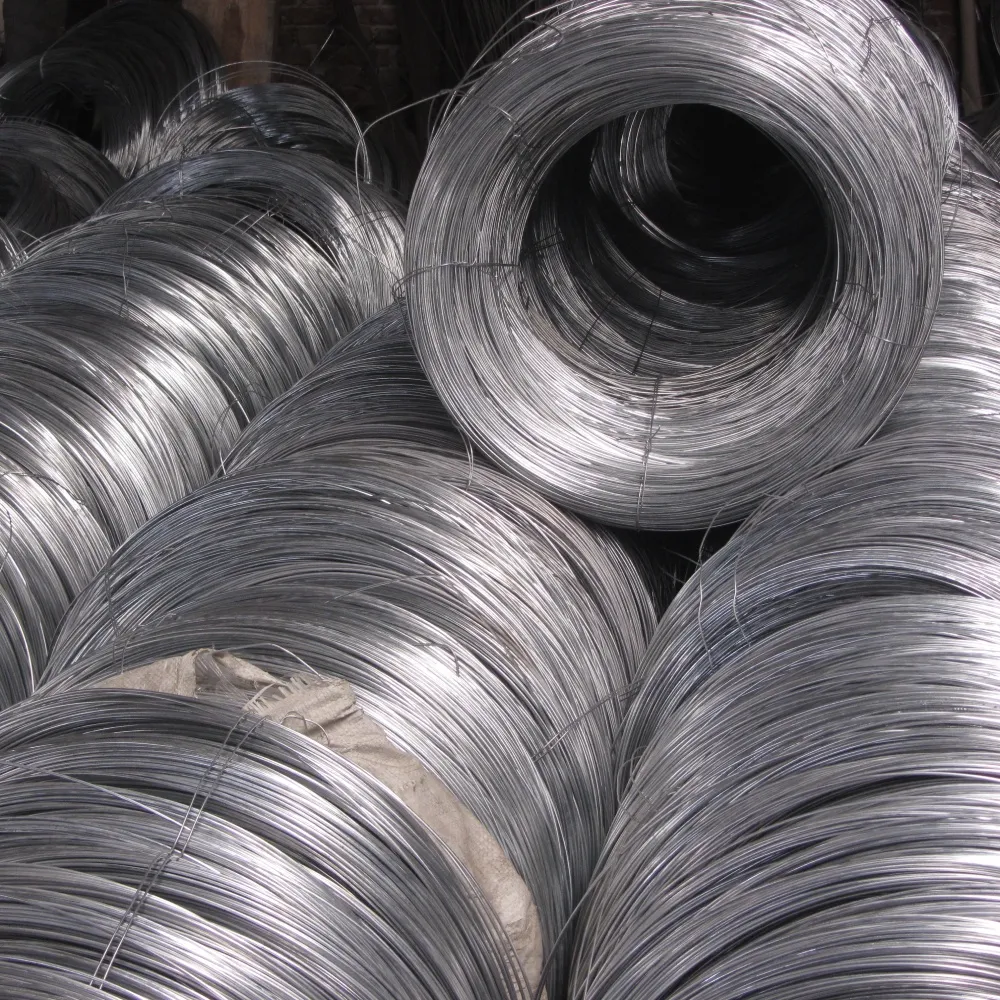The global industrial landscape increasingly demands materials that offer a superior combination of strength, durability, and corrosion resistance. In this context, galvanized wire material stands out as a fundamental component across a myriad of sectors. Its market trajectory is driven by sustained growth in infrastructure development, agricultural modernization, and the expansion of utilities worldwide.
Current industry trends highlight a rising demand for sustainable and long-lasting materials. With an emphasis on lifecycle cost reduction and environmental impact, the superior corrosion protection offered by galvanization makes it an economically and ecologically sound choice compared to untreated steel. Market analysis projects a compound annual growth rate (CAGR) for the global galvanized wire market to be around 4.5% from 2023 to 2030, driven by its indispensability in construction, fencing, and agricultural applications. Factors such as urbanization in emerging economies and the imperative for robust security perimeters further fuel this demand, influencing the galvanized wire mesh price and availability.
Technological advancements in the galvanization process, including improved pre-treatment methods and more controlled zinc bath compositions, are leading to higher quality coatings, extending the service life of products. This continuous innovation ensures that galvanized wire material remains a highly relevant and competitive solution for demanding environments.
The production of high-quality galvanized wire material involves a precise sequence of metallurgical and chemical processes designed to impart exceptional corrosion resistance to steel wire. This comprehensive approach ensures the final product meets stringent industry standards and performs reliably in diverse applications.
This meticulous process, often carried out under ISO 9001 certified quality management systems, ensures the production of galvanized wire with exceptional service life, typically exceeding 20-30 years in moderate environments.

Illustration of the hot-dip galvanization process for steel wire.
Understanding the precise technical specifications of galvanized wire material is paramount for B2B decision-makers and engineers to ensure optimal material selection for specific project requirements. These parameters dictate the wire's performance in terms of strength, ductility, and longevity.
| Parameter | Typical Range / Value | Relevant Standard |
|---|---|---|
| Wire Diameter | 0.5 mm to 6.0 mm (0.02 to 0.24 inches) | ASTM A641, EN 10244-2 |
| Tensile Strength | 350 MPa – 900 MPa (50-130 ksi) | ASTM A641, EN 10244-2 |
| Zinc Coating Weight | 40 g/m² to 300 g/m² (0.13 to 0.98 oz/ft²) | ASTM A641, ISO 1461, EN 10244-2 Class A/B |
| Elongation | 8% to 25% (depending on steel grade) | ASTM A370, EN ISO 6892-1 |
| Adhesion of Zinc Coating | No peeling or flaking when wound tightly around a mandrel | ASTM A641, ISO 1461 |
| Surface Finish | Smooth, continuous, and free from defects | Visual Inspection |
These specifications are crucial for applications where the wire's mechanical properties and resistance to environmental degradation are critical. For instance, in agricultural applications, the higher elongation percentage ensures the wire can withstand tension without breaking, while a heavy zinc coating ensures longevity against corrosive elements. Companies seeking galvanized wire for sale must carefully review these specifications to align with their project's technical demands.

Close-up view highlighting the smooth, uniform zinc coating on galvanized wire.
The versatility and robust performance of galvanized wire material make it indispensable across an extensive range of industries. Its superior corrosion resistance, coupled with varying levels of tensile strength and ductility, allows it to be adapted for both structural and functional roles in challenging environments.
In each of these scenarios, the primary advantage is the exceptional corrosion resistance provided by the zinc coating, which protects the underlying steel through both barrier protection and sacrificial action. This translates to reduced maintenance costs, extended product lifespan, and improved safety and reliability across diverse projects.
The inherent properties and protective mechanisms of galvanized wire material offer a compelling array of technical advantages, making it a preferred choice over untreated steel or other coated alternatives in many industrial and commercial applications.
These advantages position galvanized wire material as a highly reliable and economically sound solution for long-term projects demanding durability and resistance against environmental degradation.

Galvanized wire coils ready for distribution, demonstrating uniform coating and robust packaging.
Selecting the right supplier for galvanized wire material is a critical decision for B2B procurement, directly impacting project timelines, budget, and long-term performance. A thorough vendor comparison must consider not just the galvanized wire mesh price, but also factors like adherence to standards, customization capabilities, and proven track record.
| Criterion | Tikemetal (Example) | Competitor A (General) | Competitor B (Specialized) |
|---|---|---|---|
| Certifications | ISO 9001:2015, ASTM A641, EN 10244-2 compliant | ASTM A641 (basic) | ISO 9001:2008 |
| Experience | 20+ years in metal processing & galvanization | 10-15 years, broad product range | 15+ years, specific niche focus |
| Customization Options | Extensive (diameter, coating, tensile, packaging) | Limited standard options | Good for specific requirements |
| Lead Time (Typical) | 2-4 weeks (standard), 4-6 weeks (custom) | 3-5 weeks (standard), longer for custom | 4-8 weeks (specialized) |
| Quality Control | In-house lab testing, third-party verification | Standard checks | Stringent process for niche products |
| After-Sales Support | Dedicated support team, technical assistance | Standard inquiries | Project-based support |
Authoritative references, such as ISO 9001 for quality management systems and specific ASTM/EN standards for product performance, are non-negotiable indicators of a vendor's commitment to quality. Our firm emphasizes adherence to these international benchmarks, ensuring that every batch of galvanized wire material meets or exceeds client expectations and industry requirements. This rigorous approach underscores our commitment to providing reliable galvanized wire for sale.
Recognizing that standard product offerings may not always perfectly align with unique project specifications, we specialize in providing tailored galvanized wire material solutions. Our engineering team collaborates closely with clients to develop products that precisely meet their technical, performance, and application requirements.
Our approach to customization involves detailed consultation, material analysis, and prototyping to ensure the final product delivers optimal performance. This flexibility allows clients to procure precisely the galvanized wire material they need, minimizing waste and maximizing efficiency.
To illustrate the practical efficacy and long-term benefits of our galvanized wire material, we present two case studies demonstrating its application in challenging industrial environments.
Client: Large-scale farming cooperative in a coastal region of Southeast Asia.
Challenge: Traditional untreated steel fencing required replacement every 3-5 years due to rapid corrosion from salty air and high humidity, leading to significant ongoing costs and security breaches for livestock. The initial galvanized wire mesh price was a concern.
Solution: We supplied hot-dip galvanized wire material with a Class C zinc coating (minimum 275 g/m²) per ASTM A641, in 2.5 mm diameter, known for superior long-term corrosion resistance.
Results: After 15 years, the galvanized fences showed minimal signs of corrosion, far exceeding the lifespan of previous materials. The cooperative reported a 70% reduction in fencing maintenance and replacement costs over the period, demonstrating the cost-effectiveness and durability of the material in highly corrosive environments.
Client: Major civil engineering contractor for a municipal wastewater treatment plant.
Challenge: The project required tying wire for rebar in concrete structures that would be continuously exposed to moisture and mild corrosive agents inherent in wastewater. Standard black annealed wire would corrode prematurely, compromising structural integrity.
Solution: We provided custom-sized, soft-annealed galvanized tying wire (1.6 mm diameter, Class B coating) that offered both ease of use for manual tying and enhanced corrosion protection for the critical underlying reinforcement.
Results: The project successfully integrated our galvanized tying wire, ensuring the longevity and structural resilience of the concrete elements. The contractor noted improved installation efficiency due to the wire's ductility and the peace of mind knowing the reinforcement was securely tied with corrosion-resistant material.

Galvanized wire being used in a construction application, demonstrating its practical utility.
A: Hot-dip galvanized wire material involves submerging steel in molten zinc, creating a thick, metallurgically bonded coating with superior corrosion resistance and longer lifespan, typically conforming to ASTM A641. Electro-galvanized wire uses an electrolytic process, resulting in a thinner, more uniform, but less corrosion-resistant coating, often chosen for aesthetic purposes or lighter duty applications where the galvanized wire mesh price is a key driver.
A: Generally, a thicker zinc coating directly correlates with a longer lifespan. The zinc slowly corrodes over time to protect the steel. A Class A coating (minimum 60 g/m²) might last 10-20 years in a mild environment, while a Class C coating (minimum 275 g/m²) can extend this to 30-50+ years in similar conditions.
A: Welding galvanized wire material is possible but requires special precautions. The zinc coating vaporizes at welding temperatures, producing zinc oxide fumes, which are a health hazard (metal fume fever). Proper ventilation and respiratory protection are essential. Also, the welding process damages the galvanized coating at the weld joint, requiring post-weld touch-up with zinc-rich paint or sprays to restore corrosion protection.
A: For standard galvanized wire for sale products, lead times typically range from 2 to 4 weeks, depending on order volume and current production schedules. Custom orders, due to specialized processing and quality checks, may require 4 to 6 weeks. We communicate precise timelines upon order confirmation.
Our commitment extends beyond delivering high-quality galvanized wire material; we ensure a seamless customer experience from inquiry to post-delivery support.
We operate with robust supply chain management to ensure timely delivery. Standard orders for galvanized wire typically ship within 2-4 weeks, while specialized or large-volume orders may require 4-6 weeks, subject to material availability and production capacity. Expedited options are available upon request for urgent requirements. All shipments are meticulously packed to prevent damage during transit, ensuring your galvanized wire for sale arrives in pristine condition.
All our galvanized wire material products are backed by a comprehensive warranty against manufacturing defects and premature coating failure under normal use conditions. Specific warranty durations and terms are provided with each product quotation and are compliant with relevant industry standards (e.g., ISO, ASTM). This commitment underscores our confidence in the quality and durability of our products.
Our dedicated customer support team is available to assist with technical queries, order tracking, and any post-purchase requirements. We provide comprehensive after-sales support, including technical advice on installation, maintenance, and material compatibility. For assistance, please contact us via:
Our goal is to build lasting partnerships through reliable products and exceptional service, ensuring complete client satisfaction for all galvanized wire material needs.
In an era demanding sustainable and resilient material solutions, galvanized wire material stands as an essential component across diverse industrial applications. Its manufacturing process, adhering to rigorous international standards, ensures superior corrosion resistance, extended service life, and significant long-term cost savings. From critical infrastructure projects and agricultural development to robust security fencing, the technical advantages of galvanized wire are undeniable. By offering comprehensive technical specifications, customized solutions, and steadfast after-sales support, we aim to be your trusted partner in procuring high-quality galvanized wire, optimizing your project's performance and longevity.
RELATED PRODUCTS